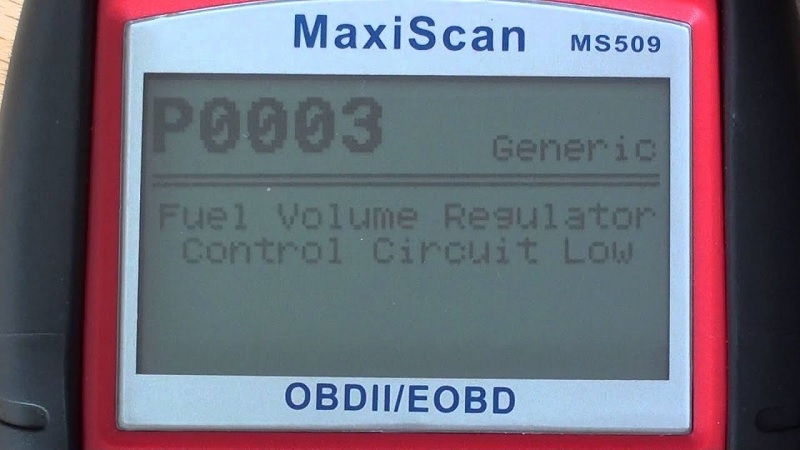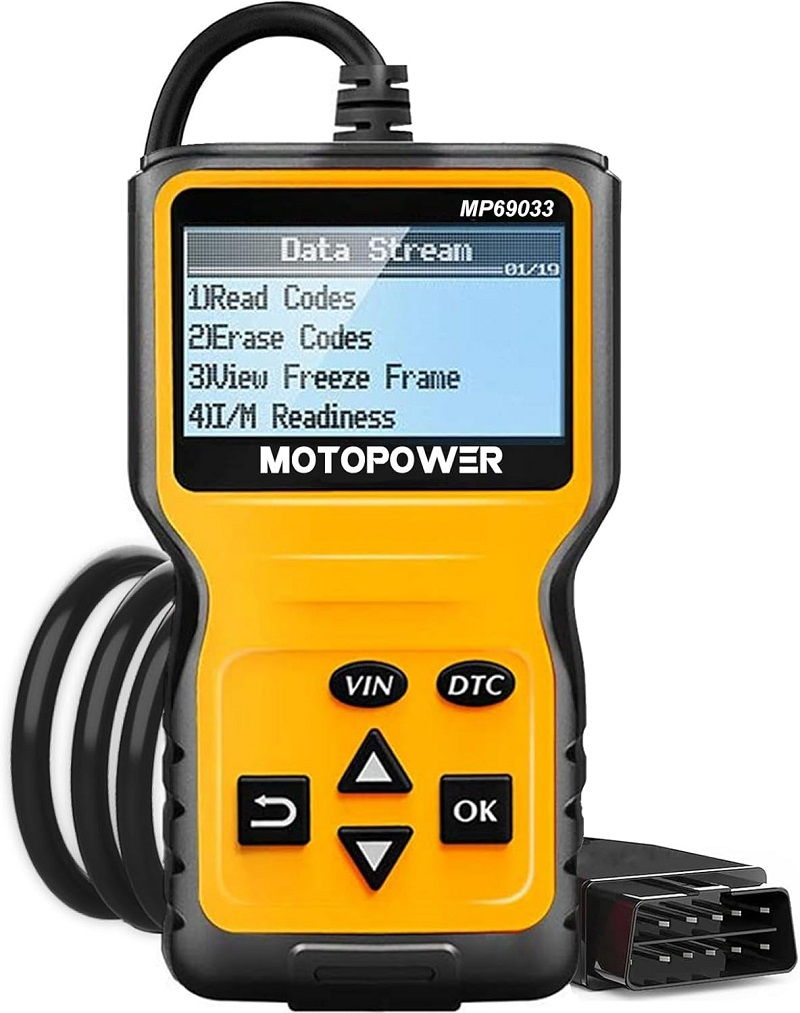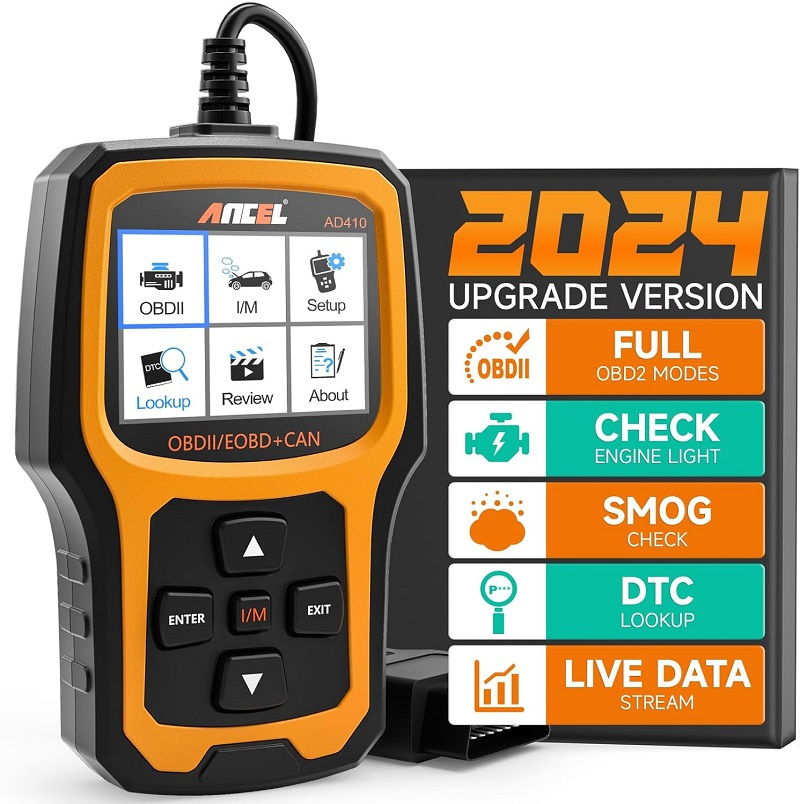This post contains affiliate links. This means I will make a commission at no extra cost to you should you click through and make a purchase [ “As an Amazon Associate, I earn from qualifying purchases.” ]. Read the full disclosure here.
P0003 Code: Fuel Volume Regulator Control Circuit Low GuideMechanic.Com In the labyrinth of automotive diagnostics, the appearance of a check engine light coupled with a cryptic code like P0003 can send shivers down the spine of both car owners and mechanics alike.
Among the myriad of diagnostic trouble codes (DTCs) stored within a vehicle’s onboard computer, P0003 specifically points to an issue with the fuel volume regulator control circuit being too low.
But what does this mean? In this comprehensive guide, we’ll unravel the intricacies of the P0003 code, exploring its significance, underlying causes, and steps to address it.
See Also: What To Do When Your Car Starts Then Dies
Understanding the P0003 Code:

The P0003 code is a generic powertrain code that is part of the On-Board Diagnostics II (OBD-II) system, designed to monitor and regulate various components related to engine performance and emissions.
Specifically, P0003 signifies a malfunction within the fuel volume regulator control circuit, indicating that the circuit’s voltage or signal is lower than the expected range.
This circuit is responsible for managing fuel pressure within the fuel injection system, ensuring optimal engine performance and efficiency.
Causes of the Code:
Faulty Fuel Pressure Regulator:
A malfunctioning fuel pressure regulator is often the primary culprit behind the P0003 code. The fuel pressure regulator is tasked with maintaining the correct fuel pressure within the fuel system, ensuring a consistent flow of fuel to the engine.
If the regulator fails or becomes stuck in a low-pressure position, it can disrupt the fuel delivery process, leading to a decrease in fuel volume and triggering the P0003 code.
Wiring Issues:
Issues within the wiring harness or connectors associated with the fuel volume regulator control circuit can also contribute to the activation of the P0003 code.
Over time, wiring harnesses can degrade due to exposure to heat, moisture, or physical damage, leading to poor electrical connections or shorts.
These wiring issues can disrupt the proper functioning of the fuel volume regulator, causing the circuit’s voltage or signal to drop below the expected range.
Low Fuel Pressure:

Low fuel pressure within the fuel system can also result in the activation of the P0003 code. This can occur due to various reasons, such as a clogged fuel filter, a weak fuel pump, or a malfunctioning fuel pressure regulator.
When the fuel pressure drops below the required level, it can affect engine performance and trigger the OBD-II system to detect a fault in the fuel volume regulator control circuit.
ECM Malfunction:
In some cases, the underlying cause of the P0003 code may stem from a malfunction within the engine control module (ECM) itself. The ECM is the onboard computer that controls various engine functions, including fuel delivery.
If the ECM malfunctions or receives inaccurate sensor data, it may erroneously interpret the signals from the fuel volume regulator control circuit, leading to the activation of the P0003 code.
Fuel Contamination:
Contaminants such as dirt, debris, or water can infiltrate the fuel system, compromising its integrity and performance. These contaminants may accumulate within the fuel lines, injectors, or fuel pressure regulator, causing obstructions or disruptions in fuel flow. As a result, the fuel volume regulator control circuit may detect abnormally low fuel pressure, triggering the P0003 code.
See Also: What Does Code P0173 Mean?
Diagnostic and Repair Procedures:
Check out this ANCEL AD410 Enhanced OBD II Vehicle Code Reader Automotive OBD2 Scanner Auto Check Engine Light Scan Tool (Black/Yellow)

Diagnosing and rectifying the underlying issue causing the P0003 code requires a systematic approach and specialized diagnostic equipment. Here are the typical steps involved:
- Connect an OBD-II scanner to the vehicle’s diagnostic port to retrieve the stored trouble codes, including P0003.
- Perform a visual inspection of the fuel system components, checking for any signs of damage, leaks, or contamination.
- Test the fuel pressure using a fuel pressure gauge to ensure it falls within the manufacturer’s specified range.
- Inspect the wiring harness and connectors associated with the fuel volume regulator control circuit for any signs of wear, corrosion, or disconnection.
- Test the functionality of the fuel pressure regulator by measuring its output pressure and comparing it to the specified values.
- If necessary, replace any faulty components identified during the diagnostic process, such as the fuel pressure regulator, wiring harness, or ECM.
- Clear the trouble codes from the vehicle’s memory using the OBD-II scanner and perform a test drive to verify that the issue has been resolved.
P0003 Code: Fuel Volume Regulator Control Circuit Low
Conclusion:
The P0003 code serves as a valuable indicator of potential issues within the fuel volume regulator control circuit, highlighting the importance of maintaining proper fuel pressure for optimal engine performance.
Whether it’s a faulty fuel pressure regulator, wiring issue, or ECM malfunction, diagnosing and addressing the root cause is essential for restoring the vehicle’s functionality and reliability.
By following systematic diagnostic procedures and utilizing specialized tools, mechanics can effectively resolve the P0003 code and ensure the vehicle operates safely and efficiently on the road.
- Used Dump Trucks for Sale Under 5000 - July 18, 2025
- Used Dump Truck for Sale Under $10000 - July 18, 2025
- Used Pickup Truck with Dump Bed for Sale - July 18, 2025
